The compact SUV segment has become increasingly competitive, with the Honda HR-V and Hyundai Tucson standing out due to their blend of style, efficiency, and technology. In this article, we will compare these two models across various technical aspects and innovations, helping you make an informed choice.
Honda HR-V vs Hyundai Tucson – Which one offers the better deal?
Two cars, one duel: Honda HR-V meets Hyundai Tucson.
Which one wins in performance, efficiency and value for money? Find out now!
Design and Dimensions
The Honda HR-V is compact yet spacious, measuring 4,340 mm in length and 1,582 mm in height. This design is aimed at maximizing interior space while maintaining a sleek silhouette. In contrast, the Hyundai Tucson takes a slightly larger approach, measuring between 4,510 mm and 4,520 mm in length and 1,650 mm in height. This gives the Tucson a more robust presence on the road.
Powertrain Options
Honda offers the HR-V with a full hybrid powertrain, delivering a respectable 130 HP from a 1.5-liter, four-cylinder engine. It features a continuously variable transmission (CVT) that ensures smooth acceleration, achieving 0-100 km/h in about 10.7 seconds. The Tucson, however, boasts a broader range of powertrain options, including petrol, diesel, hybrid, and plug-in hybrid configurations. With power outputs ranging from 136 HP to an impressive 252 HP, the Tucson caters to a diverse audience, appealing to those who prioritize fuel efficiency as well as performance.
Fuel Economy
Fuel efficiency is a significant factor for many SUV buyers. The HR-V achieves an average consumption of 5.4 L/100 km, which is commendable for a hybrid. On the other hand, the Tucson leads with various engine options, offering a fuel consumption range from as low as 5.1 L/100 km up to higher figures for the more powerful engines. This flexibility allows consumers to choose an option that suits their driving habits and preferences.
Interior Space and Comfort
Both SUVs are designed for five passengers, but they differ in cargo capacity. The Honda HR-V offers a trunk capacity of 335 to 320 liters, depending on the configuration, which is adequate for everyday use. In comparison, the Tucson excels with a trunk capacity ranging from 546 to 620 liters, making it better suited for families or those with a more active lifestyle requiring extra storage space.
Technology and Innovation
The Honda HR-V integrates several innovative features such as a user-friendly infotainment system, advanced safety technologies, and a driver-centric cockpit. The hybrid system also contributes to a lower carbon footprint, achieving a CO2 emission level of 122 g/km. The Hyundai Tucson, however, raises the bar with its cutting-edge technology offerings. It includes a dual-clutch automatic transmission for a more engaging driving experience, advanced infotainment systems with large touchscreens, and an array of driver-assistance features, including adaptive cruise control and lane keeping assist.
Driving Dynamics
The HR-V manages a top speed of 170 km/h and offers a smooth driving experience, particularly with its front-wheel-drive configuration. The Tucson, depending on the build, can reach speeds up to 194 km/h and offers both front-wheel and all-wheel-drive options, enhancing traction and drivability across various terrains. This versatility makes it highly appealing for those who wish to venture beyond city roads.
Conclusion
In summary, both the Honda HR-V and Hyundai Tucson have unique attributes that appeal to different consumer preferences. The HR-V shines with its hybrid efficiency and compact design, while the Tucson offers a broader range of options, space, and advanced technology. Ultimately, your choice may come down to whether you prioritize fuel efficiency or versatility in powertrains and cargo space. Regardless, both models are solid contenders in the crowded SUV market.
Here’s where it gets real: The technical differences in detail
Costs and Efficiency:
Looking at overall running costs, both models reveal some interesting differences in everyday economy.
Honda HR-V has a barely noticeable advantage in terms of price – it starts at 29700 £, while the Hyundai Tucson costs 30600 £. That’s a price difference of around 892 £.
Fuel consumption also shows a difference: Hyundai Tucson manages with 1 L and is therefore convincingly more efficient than the Honda HR-V with 5.40 L. The difference is about 4.40 L per 100 km.
Engine and Performance:
Power, torque and acceleration are the classic benchmarks for car enthusiasts – and here, some clear differences start to show.
When it comes to engine power, the Hyundai Tucson has a convincingly edge – offering 252 HP compared to 131 HP. That’s roughly 121 HP more horsepower.
In acceleration from 0 to 100 km/h, the Hyundai Tucson is distinct quicker – completing the sprint in 7.90 s, while the Honda HR-V takes 10.60 s. That’s about 2.70 s faster.
In terms of top speed, the Hyundai Tucson performs to a small extent better – reaching 204 km/h, while the Honda HR-V tops out at 170 km/h. The difference is around 34 km/h.
There’s also a difference in torque: Hyundai Tucson pulls clearly perceptible stronger with 379 Nm compared to 253 Nm. That’s about 126 Nm difference.
Space and Everyday Use:
Cabin size, boot volume and payload all play a role in everyday practicality. Here, comfort and flexibility make the difference.
Both vehicles offer seating for 5 people.
In curb weight, Honda HR-V is hardly perceptible lighter – 1452 kg compared to 1542 kg. The difference is around 90 kg.
In terms of boot space, the Hyundai Tucson offers convincingly more room – 620 L compared to 319 L. That’s a difference of about 301 L.
In maximum load capacity, the Hyundai Tucson performs evident better – up to 1799 L, which is about 510 L more than the Honda HR-V.
When it comes to payload, Hyundai Tucson clearly perceptible takes the win – 545 kg compared to 418 kg. That’s a difference of about 127 kg.
Who comes out on top?
Overall, the Hyundai Tucson shows itself to be dominates this comparison and secures the title of DriveDuel Champion.
It convinces with the more balanced overall package and proves to be the more versatile choice for everyday use.
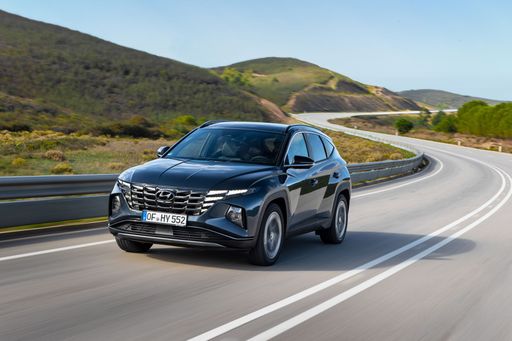 @ Hyundai Motor Company
@ Hyundai Motor Company
Hyundai Tucson
Honda HR-V
The Honda HR-V is the sensible compact crossover that blends roomy practicality with a composed, friendly drive, making it an easy pick for buyers who want everyday usability without fuss. It won’t thrill hardcore enthusiasts, but its clever packaging, comfortable cabin and low-key styling make life simpler — and that’s exactly the point.
details @ Honda Motor Co., Ltd.
@ Honda Motor Co., Ltd.
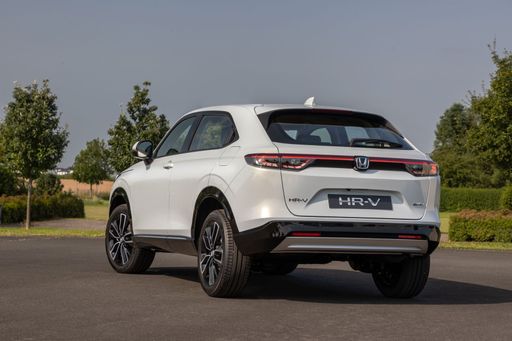 @ Honda Motor Co., Ltd.
@ Honda Motor Co., Ltd.
 @ Honda Motor Co., Ltd.
@ Honda Motor Co., Ltd.
 @ Honda Motor Co., Ltd.
@ Honda Motor Co., Ltd.
Hyundai Tucson
Hyundai Tucson marries bold, sculpted looks with a clever, roomy cabin that feels smarter than its price tag suggests. It's composed on the road, easy to live with day-to-day, and a sensible choice for buyers who want SUV style without the showroom theatrics.
details @ Hyundai Motor Company
@ Hyundai Motor Company
 @ Hyundai Motor Company
@ Hyundai Motor Company
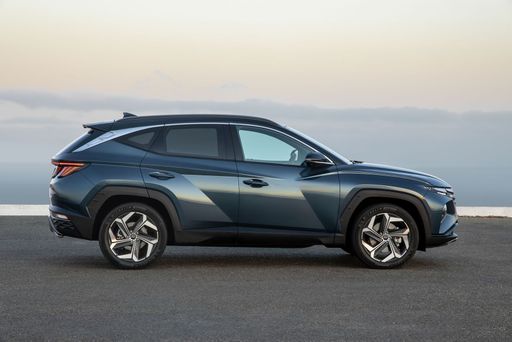 @ Hyundai Motor Company
@ Hyundai Motor Company
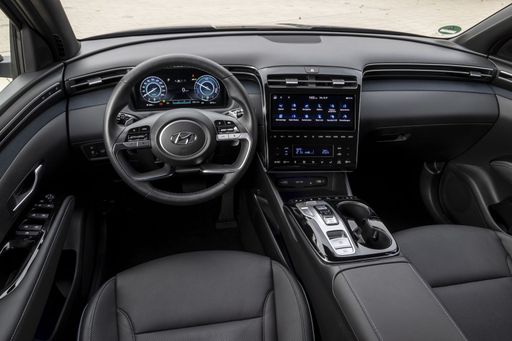 @ Hyundai Motor Company
@ Hyundai Motor Company
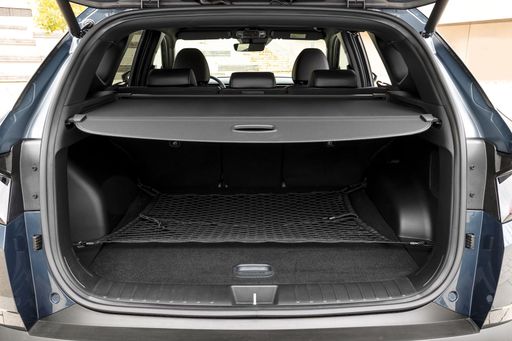 @ Hyundai Motor Company
@ Hyundai Motor Company
 @ Honda Motor Co., Ltd.
@ Honda Motor Co., Ltd.
|
 @ Hyundai Motor Company
@ Hyundai Motor Company
|
|
|
|
Costs and Consumption |
|
|---|---|
|
Price
29700 - 35400 £
|
Price
30600 - 46300 £
|
|
Consumption L/100km
5.40 L
|
Consumption L/100km
1 - 7.6 L
|
|
Consumption kWh/100km
-
|
Consumption kWh/100km
-
|
|
Electric Range
-
|
Electric Range
64 - 70 km
|
|
Battery Capacity
-
|
Battery Capacity
-
|
|
co2
122 g/km
|
co2
22 - 172 g/km
|
|
Fuel tank capacity
40 L
|
Fuel tank capacity
42 - 54 L
|
Dimensions and Body |
|
|---|---|
|
Body Type
SUV
|
Body Type
SUV
|
|
Seats
5
|
Seats
5
|
|
Doors
5
|
Doors
5
|
|
Curb weight
1452 kg
|
Curb weight
1542 - 1889 kg
|
|
Trunk capacity
319 L
|
Trunk capacity
546 - 620 L
|
|
Length
4355 mm
|
Length
4510 - 4535 mm
|
|
Width
-
|
Width
1865 mm
|
|
Height
1582 mm
|
Height
1650 mm
|
|
Max trunk capacity
1289 L
|
Max trunk capacity
1721 - 1799 L
|
|
Payload
418 kg
|
Payload
523 - 545 kg
|
Engine and Performance |
|
|---|---|
|
Engine Type
Full Hybrid
|
Engine Type
Diesel MHEV, Plugin Hybrid, Petrol, Full Hybrid
|
|
Transmission
Automatic
|
Transmission
Automatic, Manuel
|
|
Transmission Detail
CVT
|
Transmission Detail
Dual-Clutch Automatic, Automatic Gearbox, Manual Gearbox
|
|
Drive Type
Front-Wheel Drive
|
Drive Type
Front-Wheel Drive, All-Wheel Drive
|
|
Power HP
131 HP
|
Power HP
136 - 252 HP
|
|
Acceleration 0-100km/h
10.6 - 10.8 s
|
Acceleration 0-100km/h
7.9 - 11.6 s
|
|
Max Speed
170 km/h
|
Max Speed
180 - 204 km/h
|
|
Torque
253 Nm
|
Torque
250 - 379 Nm
|
|
Number of Cylinders
4
|
Number of Cylinders
4
|
|
Power kW
96 kW
|
Power kW
100 - 185 kW
|
|
Engine capacity
1498 cm3
|
Engine capacity
1598 cm3
|
General |
|
|---|---|
|
Model Year
2025
|
Model Year
2024 - 2025
|
|
CO2 Efficiency Class
D
|
CO2 Efficiency Class
E, B, F, D
|
|
Brand
Honda
|
Brand
Hyundai
|
What drive types are available for the Honda HR-V?
The Honda HR-V is available as Front-Wheel Drive.
The prices and data displayed are estimates based on German list prices and may vary by country. This information is not legally binding.
